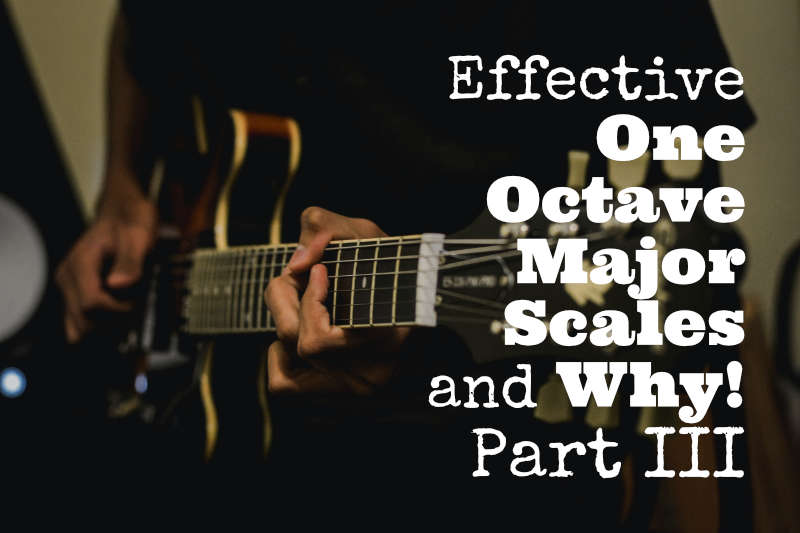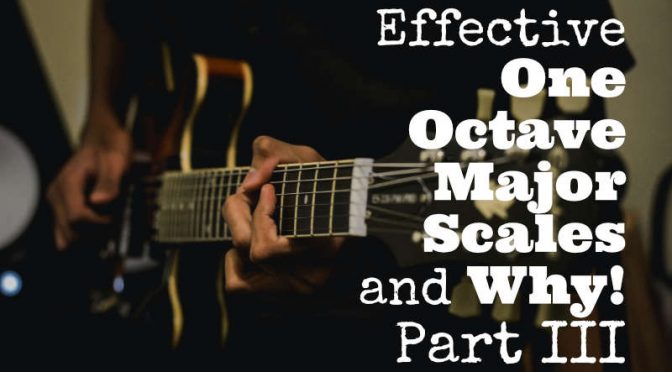GUITARHABITS
Last Updated on October 19, 2020 by Klaus Crow

Today you are ready to take on Part III of the effective one-octave major scales. We’re going to climb up the strings and into the higher regions of the scale. This will make the scale patterns more comfortable to play because it’s easier to reach and press the thinner strings.
Moreover, most guitar solos take place on the highest strings of the guitar, so these scale patterns are crucial to get under your soloing fingers.
Recap One Octave Major Scales
For those of you who just stepped into Part III of the One-Octave major scale series and missed out on Part I and Part II, here are the reasons you want to learn this:
The one-octave major scale makes it easy to recognize the shape, the structure, the notes and the intervals of the scale. One-octave scales are a perfect start for beginners and will create new insights for intermediate guitar players. The major scale is the mother of all scales and is the cornerstone of everything in guitar playing.
Starting from the Root Note on the D-string
Today we are learning three major scale shape/patterns with the first (root) note starting on the D-string (4th string).
Tip: Learn and memorize the notes on the D-string so you can instantly recognize the key of the scale when you want to move the scale up or down the fretboard.
Major Scale Fingering
For the major scale shapes I’ve notated the fret-hand fingering. The numbers next to the notes on the note staff right above the tablature indicate the fret-hand fingers:
| 1 = index | 2 = middle finger |3 = ring finger | 4 = pinky |
The numbers in the yellow neck diagrams also indicate the fret-hand fingering. The neck diagrams clearly show the shape and pattern of each scale. Learn to visualize and memorize the shape of each pattern.
Note: Apply alternative picking playing the scales shapes.
Practice in every Key
Once you got the G major scale shapes under your fingers learn the pattern in different keys or in every key following the cycle of fourths.
Let’s enjoy the lesson!
MAJOR SCALE SHAPES – ROOT NOTE STARTS FROM THE 4TH STRING
G MAJOR SCALE fingering / shape / pattern #7


G MAJOR SCALE fingering / shape / pattern #8


G MAJOR SCALE fingering / shape / pattern #9


One Octave Major Scale Assignments Part III
- Learn each scale shape thoroughly using alternate picking.
- Visualize and memorize the shape of each scale pattern in your mind.
- Learn the notes of the D-string.
- Play the shapes in different keys or through the cycle of fourths.
- Play the scales along with a metronome gradually increasing the bpm.
- Re-practice the one-octave major scale patterns of Part I and II.
- Try to create some melody with the new scale patterns.
- Bonus: Learn the scale inside out with extra exercises
Keep in touch for the final lesson of the One-Octave Major Scale series (Part IV). Coming soon!
Start making the small steps today that will accumulate and improve your playing now and overtime!
Read More
This article is from an external source and may contain external links not controlled by Empeda Music.

